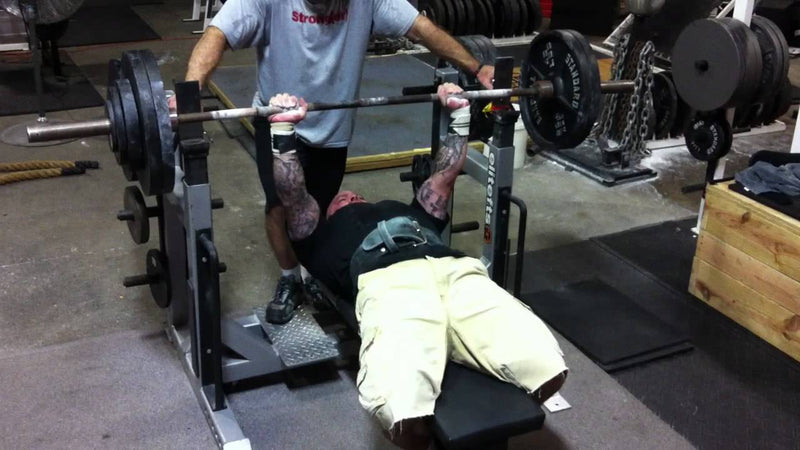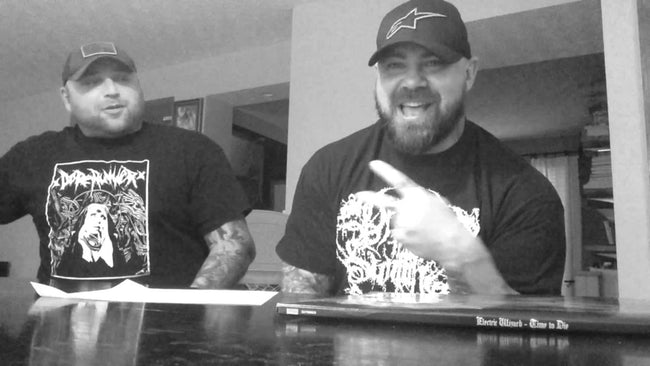We are going to talk about the bench press and what exercises, ideas and programming helped my bench press.
- These things were incredibly significant because my bench is/was horrible.
- This was a result of many things including priorities of training; everything I did in training was for sport. And this belief was all about having strong legs and being explosive. The VAST majority of my training was squats, cleans, hurdle and box jumps, sprints, running, hill sprints and anything and everything in between. Upper body was a complete after thought and was done with very little enthusiasm or consistent attention.
- And let’s be honest – if I was any good at upper body lifts, I probably would have done more when I was younger. But I sucked so instead of addressing it, I just did more squats, hills and jumps.
- If you are going to be lopsided when you are younger, it’s better you develop legs and lungs and not pipes and titties.
- When I got to college, I did a bit more upper body work but it still wasn’t a huge priority. It wasn’t until the end of my college football career, specifically the final year, that I started taking it seriously. It was at this time that I was introduced to Louie Simmons and WSBB.
- I knew I wanted to keep training but without a specific goal/purpose, I would be lost. So I read a bit about powerlifting and hopped on that train. I was massively naïve.
- So I took Louie’s advice about training – the WSBB plan is super simple to figure out and I started training.
- Deadlift took off, squat took some time but the bench press sucked balls. I was doing everything “by the book” but nothing seemed to help.
- Weak Point training was the name of the game and everyone’s triceps were weaker than their shoulders and chest. More specifically, the lockout.
- I didn’t know people used bench shirts in PL; and this was really before they started taking off in both design and understanding.
- What I didn’t realize that the vast majority of people that Louie was talking to and was referencing already had a massive base of strength, most of them with some background of body building or at the very least, lots of pressing. I was exact opposite.
- And I struggled and struggled - always training my triceps hard and negating the shoulders. People don’t know this now but overhead pressing was regarded with massive disdain and hatred. NOTHING WAS WORSE than pressing a barbell overhead.
- Now this may have had some merit to an older lifter with miles on the shoulders. But for a young kid with very little experience, it was not good advice.
- So after over a year of my bench press sucking hobo balls, I had a revelation. At this time I was at the University of Kentucky and training by myself. It was a Sunday morning and it was bench press day. I did my 8 sets of 3 reps at 225 and then decided to see if my shoulders were really not a weak point. And so I did a standing press and couldn’t press 135lbs over my head.
- At this point, I realized that Weak Point training is for for people who were strong. A “weak point” meant that I had a “strong point.” And because I had no strong points, I had ZERO weak points. EVERYTHING was weak. I made the ultimate mistake – I thought I was too good for basic training.
- So that day, I made a pledge – If I wanted to bench press 405lbs, I had to drive my press to 405lbs. And it started that day. I decided that I’d do 50 total reps, twice a week with the press or something similar. It could be high reps, low reps or any combination of that. But I essentially had to make up for lost time and do so with patience and consistency.
- Then I started to look at other areas of my training and realized that I made the same mistake. I made a list of performances that would qualify as something no longer being a weak point. For example, you had to do 35 lunges/leg with 405 lbs. Until then, I had weak quads. If I couldn’t perform 25 repetitions with 225 across my back when doing glute ham raises, I had weak hamstrings and glutes. If I couldn’t do 10 reps with 200lbs on both chins and dips – yep, still weak.
- I had no weak points – I had a weak body. No more nitpicking movements until I was strong.
- The result – before this, it took me 7 years for my bench press to go from 300-400lbs. After employing the no bullshit/no weak points - I benched 440lbs in 2 months. About a month later, I benched 455.
- Followed the typical WSBB split. 8 sets of 3 reps on Sunday – and a Max effort day on Wednesday.
- I trained alone during much of this time, this was before I met Kevin so I didn’t always have a spot on ME day.
- But this didn’t matter – the big change was doing at least 50 total reps of a full range pressing movement as assistance. I usually did 5-10 total sets of a movement, twice a week.
- I’d pick ONE movement per workout and pound the hell out of it. Usually working up but always smoking each and every set.
- The big movements I did most often: press, chain suspended push-ups with a green band behind back, various DB pressing (flat or incline). These comprised the vast majority of the training.
- How I did them – I realized that it didn’t matter how strong I was at lockout if I couldn’t get the bar there. If the bar was stuck an inch off my chest, it didn’t matter how strong my triceps were.
- This was the same idea as what golfers say – drive for show, but you putt for dough. That’s a great saying but absolutely worthless if it takes you 10 shots to get to the green.
- This is called common sense. And no sense in focusing on one thing when we haven’t even conquered the first.
- Every single rep of this assistance work was done with one purpose – insane explosion off the chest/shoulders. So reps were done with purpose and intent – I was just piston fucking the barbell or dumbbell. Control on the way down, slight pause, total body explosion on the way up. This was as much as a mental drill as physical.
- Much learn how to coordinate every part of your body during a lift – this takes time and preferably, a sporting background.
- For me, it also helped to be extremely angry and competitive.
- You can force your way into inter and intra muscular coordination – but you have to be willing to practice it at all times.
- Understand that during this time, I also trained other areas. I did not neglect my triceps or lats or upper back. I couldn’t afford to – I was weak there, too.
- I still hear the term “weak point training” bandied about like it’s some kind of super-cool, secret club. Like the reason YOU are weak is because YOU don’t know how to train a specific weak point.
- Here’s a general clue – the vast majority of people who use this term on the internet are weak all over.
- Stop analyzing so much – the reason why your bench sucks isn’t because you need to perform of band assisted and resisted 4 board press with chains. You are weak because you are weak.





